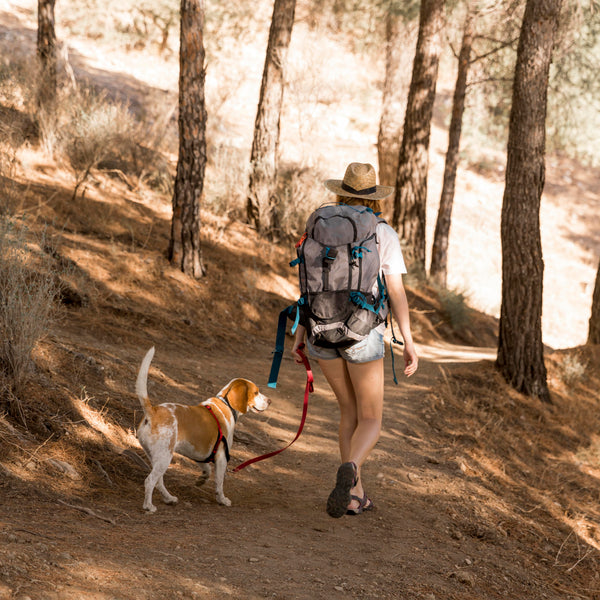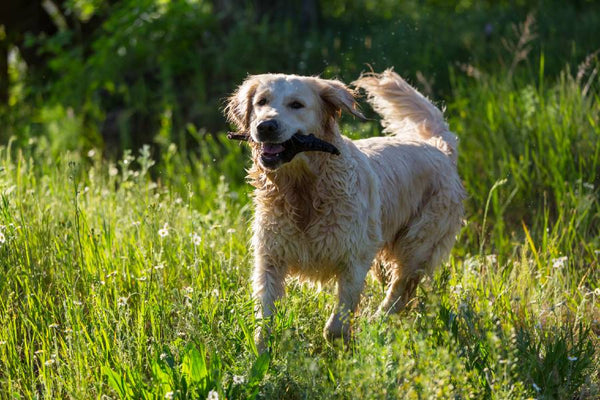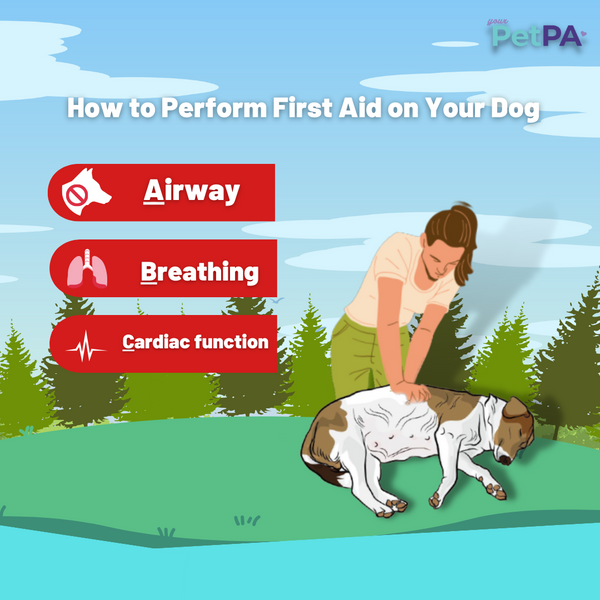
Pet Safety: Visiting the Beach, Lake or River with Your Dog
The Summer months are when we spend a lot of time outdoors with our family and furry friends relaxing in the sun and playing outside. Nature experiences and outdoor activities are at the top of the list at this time of year, but this means being mindful about the safety of your dog at the beach, lake, river or creek because there are a range of hazards around waterways you need to be aware of.
Before you go exploring check out New Zealand’s Lead the Way programme. This is a programme that shares information with pet owners about keeping you, your pet and native wildlife safe. There is also a full breakdown of the seven steps you should take when venturing outdoors.
Top dog friendly beaches to take your dog in New Zealand:
There are some great beaches in New Zealand that are dog friendly, but just make sure you check your local area and council websites as some beaches have on and off-leash days and times.
Some of the most popular dog beaches in New Zealand are:
- Takapuna Beach – Auckland
- Bethells Beach – Auckland
- Bottle Lake Forest Park – Christchurch
- Ocean Beach Domain – Dunedin
- Mt Maunganui Beach – Tauranga
- Mangawhai Heads Beach – Mangawhai
- Piha Beach – Auckland
- Teawanga – Hastings
- Lyall Bay – Wellington
- Golden Bay – Nelson
Top Dog Friendly Hikes to Take Your Dog in New Zealand’s South Island:

If you’re after a bit of adventure into the wilderness with mountains, rivers and lakes then this list is for you:
- Kaikoura – Mt Fyffe
- Marlborough Sounds – Nydia Track
- Lake Ohau – Greta Track
- Canterbury – Craigieburn Forest Park – Helicopter Hill
- Queenstown – Mt Crichton Loop Trach
- Canterbury – Hanmer Springs – Mount Isobel
Top Dog Friendly Hikes to Take Your Dog in New Zealand’s North Island:
- Waikato – Ketemaringi Track
- Coromandel – Kauaeranga Valley – Tarawaere Dam Track Loop
- Tararue Forest Park – Gentle Annie Track
- Remutaka Forest Park – Butcher Track
- Coromandel – Karangahake Gorge – Karangahake Gorge Historic Walkway
- Central North Island – Kaimanawa Forest – Mt Urchin Track
Keeping your dog safe at the Beach, River or Lake

Swimming is a fantastic way to cool your dog down in the heat but there are some things you need to watch out for. Never let your dog swim in huge waves or heavy currents even if they are a strong swimmer because they could easily become tired and go under or ingest water that makes them sick.
Swallowing water can be dangerous for your dog as they can become nauseous, lethargic or weak from water intoxication from too much water or bacteria or algae in the water.
Other signs of water intoxication to look out for in a dog are dilated pupils, excessive salivating, vomiting and coughing a lot and in severe cases dogs may have difficulty breathing, collapse or have a seizure.
If you are going out on the water where it’s quite deep and rough in a kayak or boat, it would be wise to invest in a pet life jacket as an extra safety precaution. Dogs can easily be caught in strong currents or become entangled in reeds or caught on something underwater.
How to keep your dog safe at the Beach, Lake or River
Taking your dog to the beach, lake or river can be a great way to enjoy the outdoors together and have fun. But it’s important to keep your dog safe by making sure of these things below:
- Make sure your dog is hydrated and has access to plenty of fresh water
- Bring some freshwater with you and make sure you take breaks between play so your pup can have a drink and catch their breath
- Keep an eye on your dog and make sure you’re aware of anything that might be in the water such as logs and sharp objects, especially if they are running and playing fetch
- Make sure your dog is wearing a life jacket or flotation device if they are in deep water or out on a boat
- Watch for any signs of heat exhaustion. It can be easy for your dog to overheat in the sun on a hot day so make sure to take frequent breaks in the shade and give them fresh water to drink
- If you’re going out somewhere in the bushland it might be wise to bring a first aid kit just in case. Be prepared with basic items such as bandages, antiseptic cream and tweezers just in case
In an emergency, what should I do?
The first thing to assess is if there are any additional threats to either yourself or your dog.
Keep your dog calm and as quiet as possible with little movement, especially if there is a possible trauma such as a broken limb.
Contact your veterinary hospital and inform them of the situation and get further first aid advice depending on the injury your dog has sustained.
Safely move your injured dog or get somebody to help you. Carefully maneuver your dog onto a blanket or coat where he can be secured in a vehicle, and you can get to a veterinary hospital as soon as possible
How to Perform First Aid on Your Dog:

The basics of First A's is performing you’re A, B and C’s, these are:
A- Airway
B- Breathing
C- Cardiac function
The biggest threat to your dog at the beach, lake or river is the possibility of ingesting something toxic that makes them sick, ingesting too much water or cutting their foot open on something sharp or suffering from heatstroke.
Dog swallowing too much water
Just like people dogs can ingest water and become sick or drown if they get too much water in their airways. If your dog does swallow too much water or you suspect your dog has water intoxication, get to a vet or emergency clinic immediately for treatment.
Heat stroke in dogs
This is most common in hot weather when your dog is overactive on a hot day or left in the sun for too long without any shade or access to fresh water. Body temperature can rise quickly, and the initial signs include excessive panting and obvious distress. It’s important to reduce your dog's temperature as quickly as possible using cool water and keep your dog in the shade. If the heat stroke is to a point where your dog is collapsing or having a seizure, it’s important to get them to a vet as quickly as possible.
Paw laceration or injury
If your dog steps on something sharp and slices their paw you can perform basic first aid on the wound while contacting your vet for any antibiotic treatment for bacteria. Make sure you keep the wound clean and if possible, wrap it in a bandage to prevent infection and your dog licking the wound. Keep your dog off their foot as much as possible while you seek treatment for stitches if the wound is deep. A bandage with a gauze underneath helps cushion their foot in the meantime, allowing them to place some pressure on the wound as they walk.
Consult with a trusted vet
If you’re unsure whether your dog requires emergency assistance or unsure if you need a face-to-face veterinary consult, You can speak to our Your PetPA NZ experts.
Shop at Your PetPA online store for vet recommended brands. Thriving Pets+ members receive a 10% discount on all purchases.
Follow us on Instagram and Facebook for more information about pet care from our expert veterinary team.




